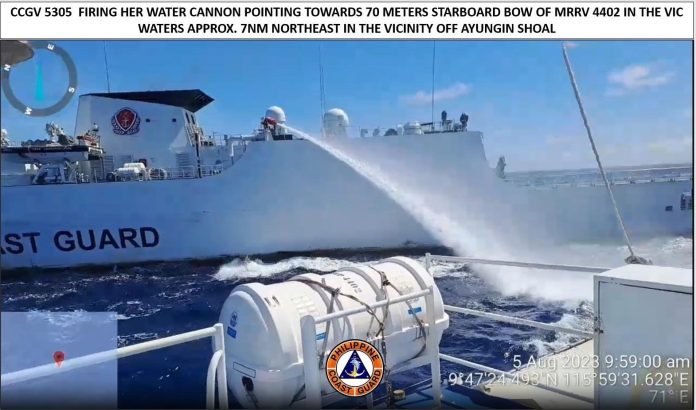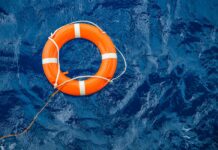BEIJING: China is facing international backlash after one of its coast guard vessels used a water cannon against a Philippine boat in the South China Sea on Saturday, CNN reported.
Analysts say the incident escalated an already tense situation and could lead the United States and its allies to accelerate plans for joint patrols in the waterway.
A smaller Philippine boat was cannon sprayed by a large Chinese Coast Guard ship as it attempted to deliver supplies to a garrison of Philippine marines at Second Thomas Shoal, a South China Sea feature in Manila’s exclusive economic zone that China calls Renai Reef and also claims as its sovereign territory.
Photos from the Philippine Coast Guard also showed the Chinese ship moving dangerously close in front of the Philippine Coast Guard vessels as they escorted the resupply boats, according to CNN.
“The Philippine Coast Guard (PCG) strongly condemns the China Coast Guard’s (CCG) dangerous manoeuvres and illegal use of water cannons against PCG vessels,” the PCG wrote in a statement shared on its official Facebook account Saturday.
By Sunday, Washington, Manila’s principal ally, had denounced China’s actions and reaffirmed that it will uphold its end of the mutual defence pact with the Philippines.
“The United States reaffirms an armed attack on Philippine public vessels, aircraft, and armed forces — including those of its Coast Guard in the South China Sea — would invoke US mutual defence commitments under Article IV of the 1951 US Philippines Mutual Defense Treaty,” US State Department spokesperson Matthew Miller said in a statement.
Allies of the US formed a unified front with Manila and Washington.
Australian, Japanese, and German officials referred to China’s moves as “dangerous” and “destabilising.”
The Canadian Embassy in Manila also stated that Ottawa “unreservedly condemns the dangerous and provocative actions taken by the Chinese Coast Guard.”
The Chinese ambassador in Manila, according to Philippine President Ferdinand Marcos Jr, was presented with a diplomatic note of complaint “along with images and videos on what had happened” on Monday, as per CNN.
While this was going on, the Philippine Foreign Ministry and Armed Forces held a joint press conference to denounce China’s use of water cannons, which they called a “dangerous and illegal practise” that put “the lives of the Filipino crew at risk in violation of humanitarian and international law.”
The tension between Manila and Beijing has always been centred on the South China Sea.
Beijing asserts “indisputable sovereignty” over the majority of the islands in the 1.3 million square miles South China Sea, even those hundreds of miles from the Chinese mainland.
This includes the Spratlys, also known as the Nanshas in Beijing, a group of 100 tiny islands and reefs that are also fully or partially claimed by the Philippines, Malaysia, Brunei, and Taiwan.
However, Manila refers to the region as the West Philippine Sea. It purposefully grounded the BRP Sierra Madre, a navy transport ship manned by Filipino troops, on Second Thomas Shoal in 1999 to bolster its territorial claims.
The International Permanent Court of Arbitration in the Hague, which determined in 2016 that China lacks a legal foundation to assert historic rights to the majority of the South China Sea, supports Manila’s claims. Beijing has disregarded the decision.
According to reports, Australia and Japan may join the US, Philippines, and other nations on patrol.
Jonathan Malaya, assistant director general of the National Security Council, stated at the Monday press conference of the Philippine government that Manila would continue to file diplomatic protests regardless of the response from the Chinese side because failing to do so might be interpreted by China and the international community as an abandonment of its position to assert sovereignty, CNN reported. (ANI)
Also Read: India questions China’s claim over South China Sea







